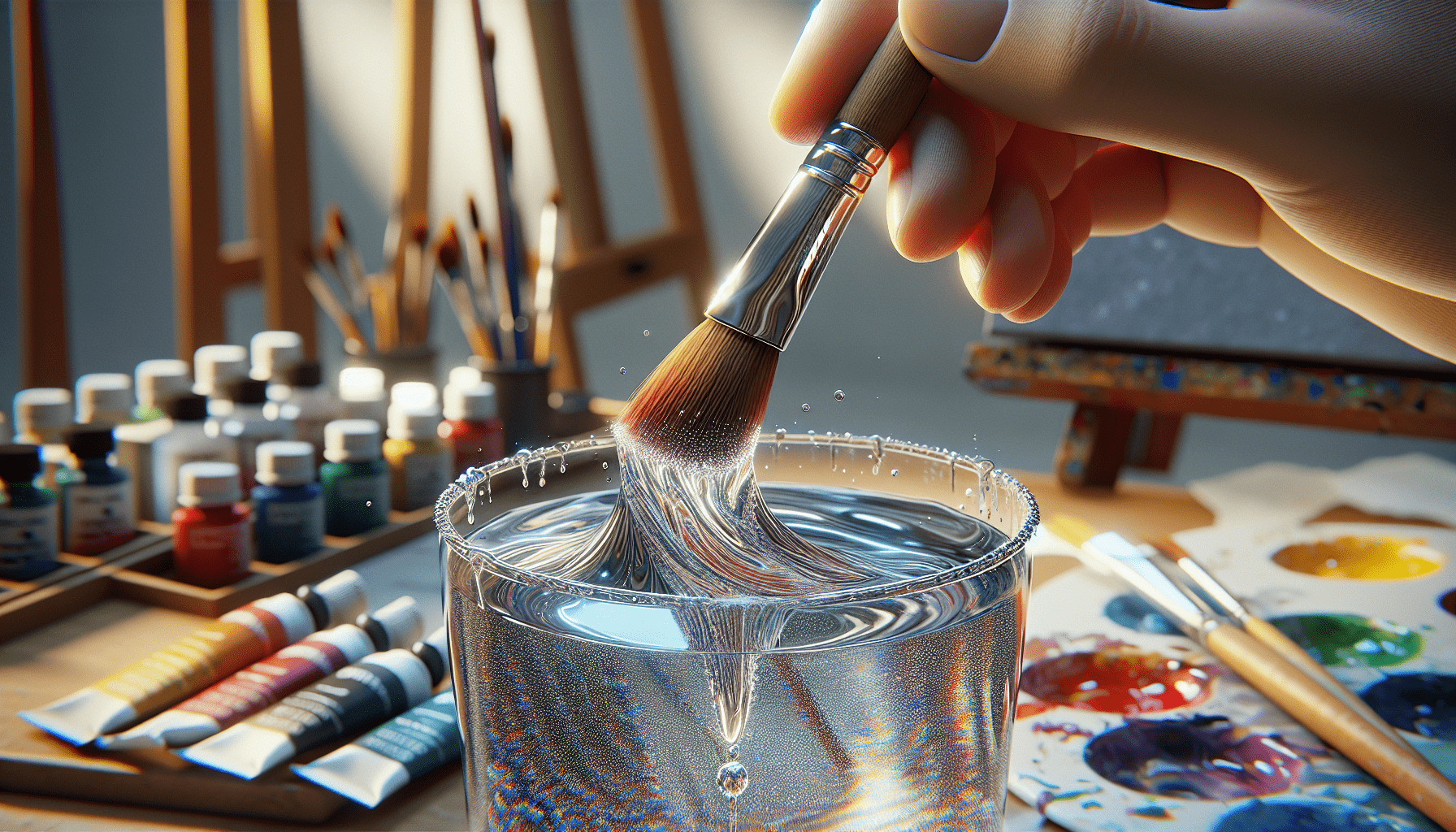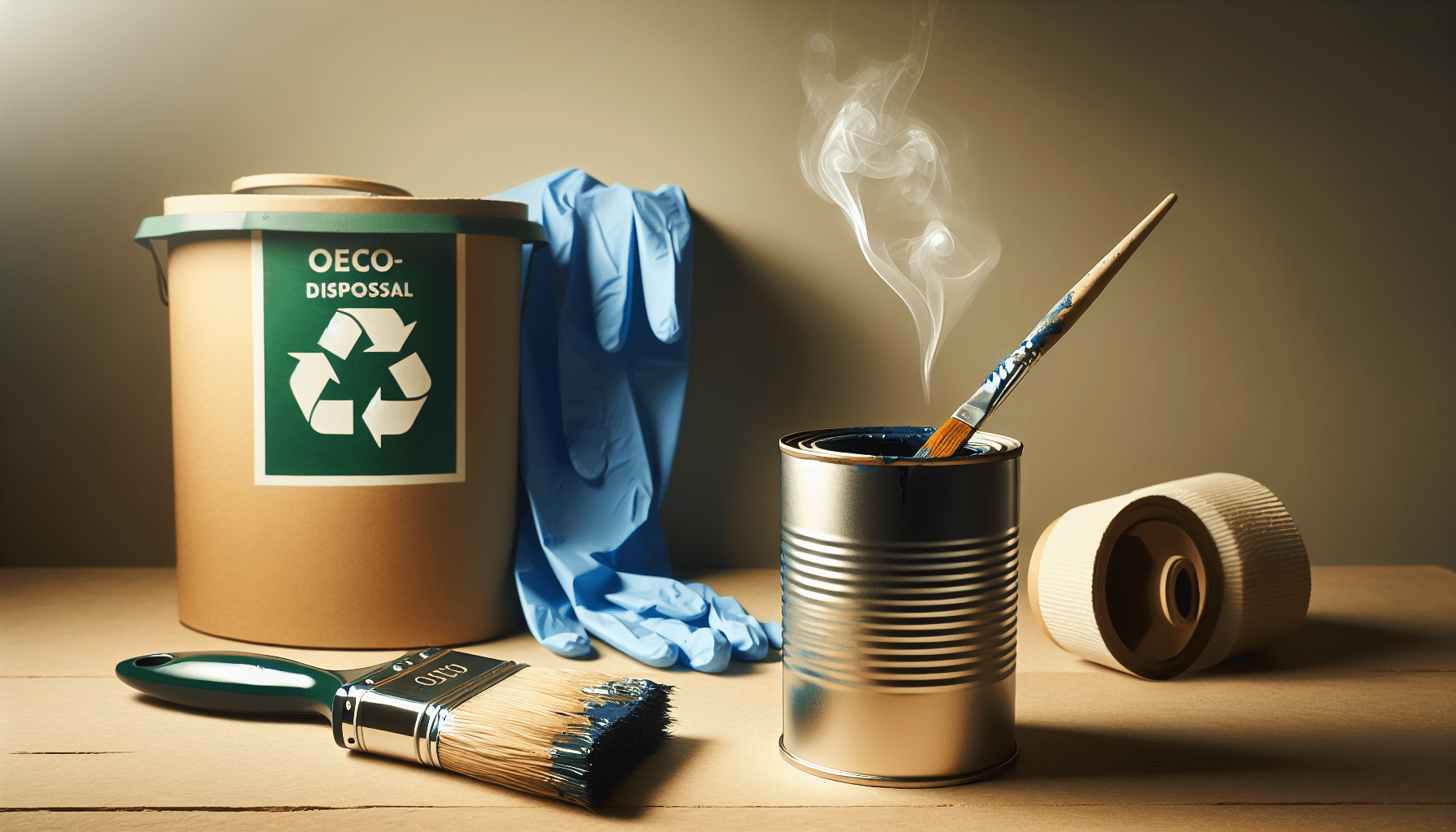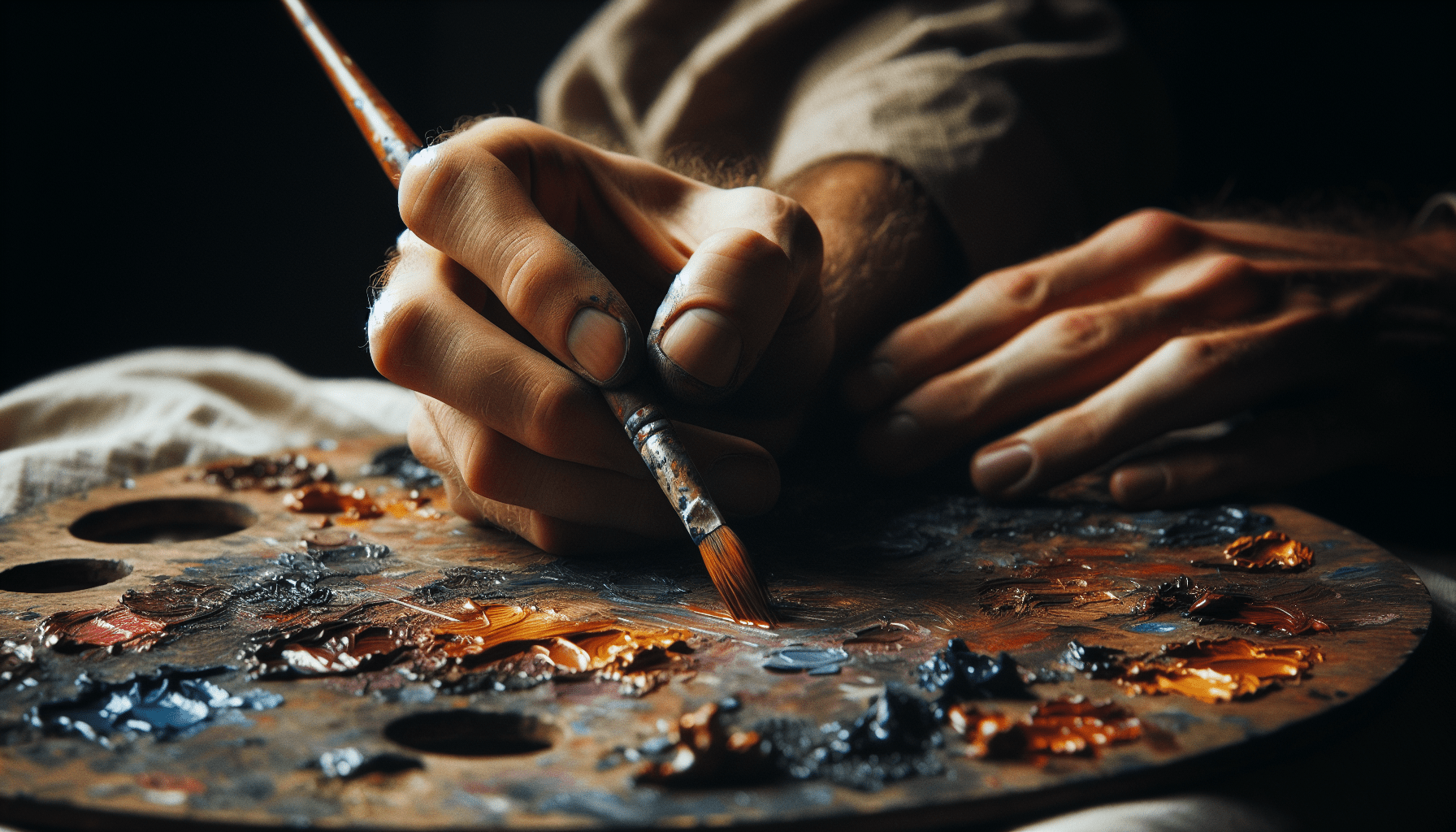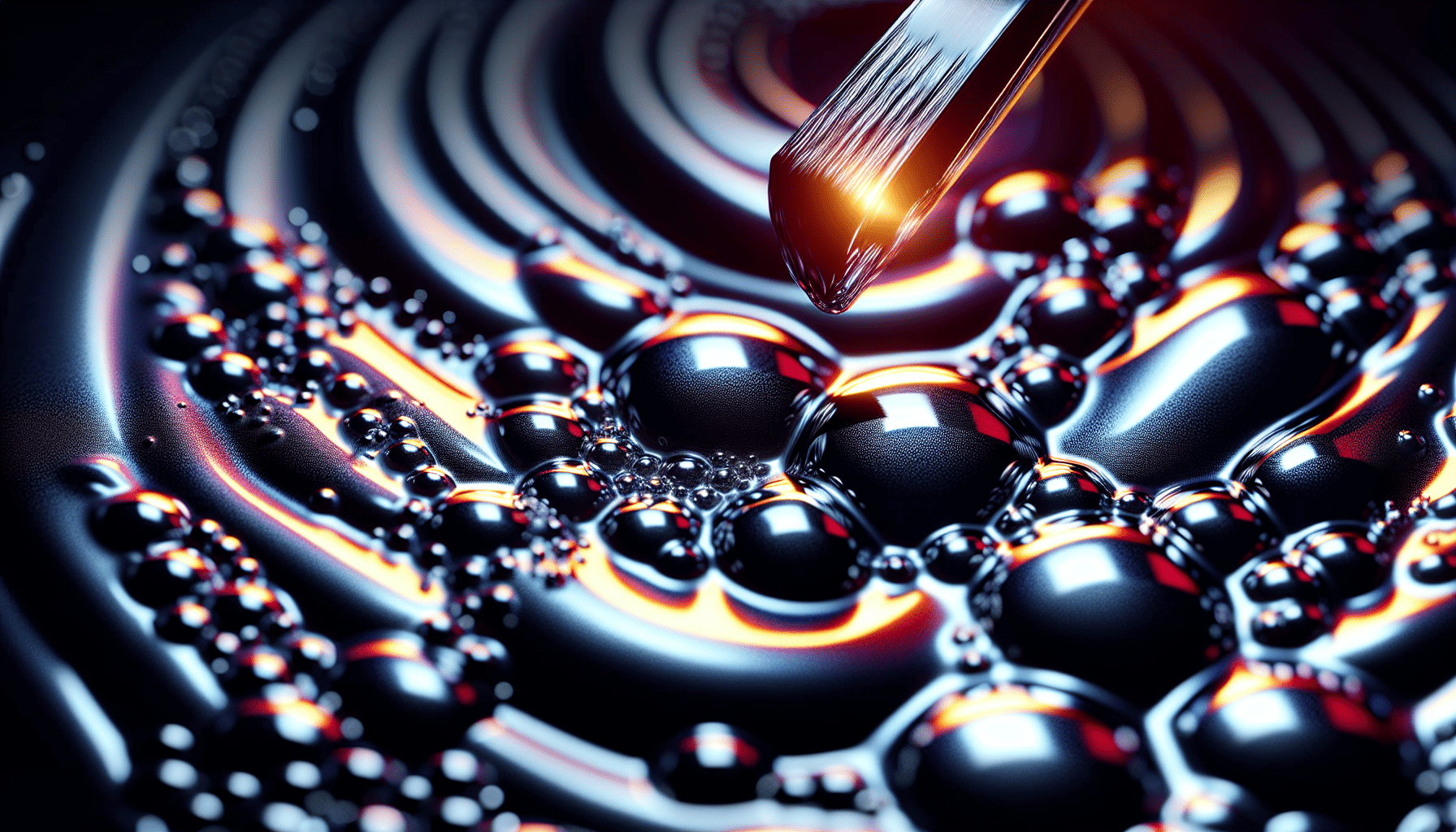In the meticulous world of art restoration, understanding the appropriate solvent for cleaning oil paintings is paramount. Your choice of solvent can significantly impact the integrity and longevity of these artworks. This article delves into the most effective and commonly used solvents, providing you with a comprehensive guide on how to maintain the vibrancy and condition of oil paintings. By exploring the properties and applications of various solvents, you will be empowered to preserve the artistic heritage with the utmost care and professionalism. Have you ever wondered what solvent is used to clean oil paintings? If you have, you’ve stumbled upon the right article. Ensuring the longevity and aesthetic appeal of your cherished oil paintings requires a meticulous approach to cleaning. Cleaning oil paintings is an intricate process that demands careful consideration, appropriate materials, and an understanding of the layers of the artwork. Below, we will dive deeply into this topic to provide you with comprehensive insights.
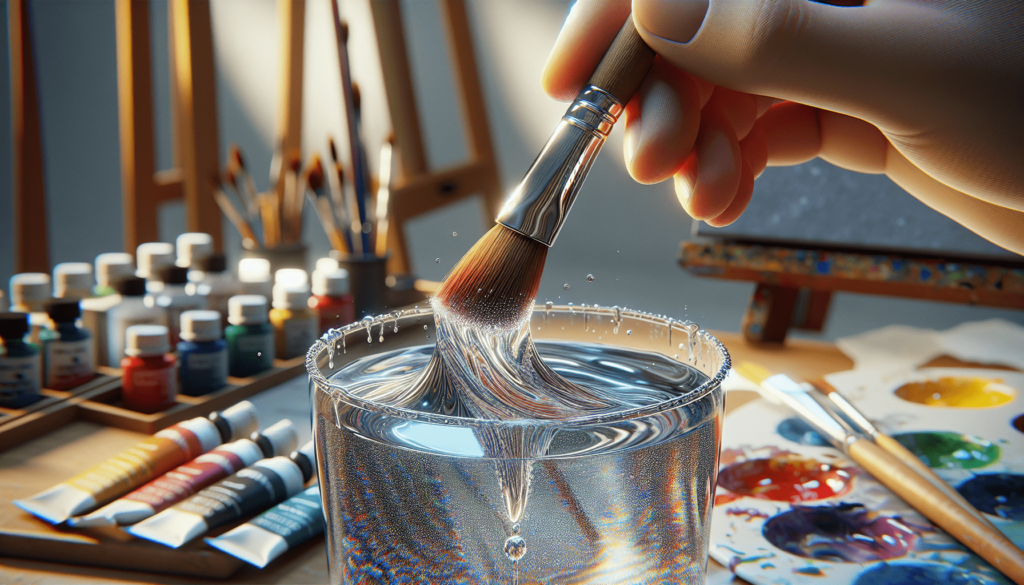
Understanding Oil Paintings
Before delving into the specific solvents and techniques used to clean oil paintings, it’s crucial to understand what makes up an oil painting. Oil paintings consist of several layers, each of which has its own composition and vulnerabilities.
Components of an Oil Painting
- Canvas or Support: The base layer, typically made of linen or cotton.
- Ground Layer: A layer of primer, usually gesso, applied to the canvas to prepare it for painting.
- Paint Layers: These are formed by the oil paint itself, which is a combination of pigment and oil (usually linseed oil).
- Varnish: A protective layer applied after the painting is finished and dried. This layer can become dirty and yellow over time.
Importance of Cleaning
Over time, oil paintings accumulate dust, grime, and yellowing varnish, which can obscure their original brilliance. A proper cleaning process can bring out the vibrancy and details that were initially intended by the artist.
Types of Solvents
Different types of solvents are used in the cleaning process, each having its own properties, benefits, and drawbacks. The choice of solvent largely depends on the nature and age of the painting, as well as the type of dirt and grime accumulated on it.
Common Solvents Used
| Solvent | Description | Advantages | Disadvantages |
|---|---|---|---|
| Turpentine | Derived from pine trees, commonly used in art | Effective at dissolving oils | Strong odor, can be harsh on paintings |
| Mineral Spirits | Petroleum-based, less odorous | Effective cleaner | Can leave residue |
| White Vinegar | Acetic acid diluted in water | Safe, gentle cleaner | Less effective at removing heavy grime |
| Acetone | Highly potent and fast-evaporating solvent | Strong dissolving power | Can be too aggressive, risk of damaging painting |
| Ethanol | Alcohol-based solvent | Good for light cleaning | Can dry out the paint |
| Benzine/Benzene | Powerful, petroleum-based solvent | Effective for greasy substances | Highly toxic, risk of damaging the painting |
Detailed Analysis of Popular Solvents
To help you understand which solvent might be right for your specific situation, let’s take a closer look at some of the commonly used solvents.
Turpentine
Turpentine is one of the oldest and most commonly used solvents in the art world. It is effective at dissolving oils and varnishes, making it popular for cleaning and restoring oil paintings.
- Usage: Mix with a small amount of water and apply with a soft cloth or cotton swab.
- Advantages: Highly effective at breaking down oils.
- Disadvantages: Strong, unpleasant odor; can be harsh on delicate paintings if used excessively.
Mineral Spirits
Mineral spirits, less odorous and volatile compared to turpentine, offer an effective cleaning solution for oil paintings.
- Usage: Apply with a soft brush or cloth; gently work on the painting’s surface.
- Advantages: Less harsh than turpentine, excellent for removing grime.
- Disadvantages: Potential to leave a residue that may require further cleaning.
White Vinegar
Though unconventional, white vinegar serves as a gentle alternative solvent. It’s particularly beneficial for delicate paintings where harsher solvents may cause damage.
- Usage: Dilute with water (typically a 1:1 ratio) and apply gently with a cotton swab.
- Advantages: Safe and gentle on paintings, non-toxic.
- Disadvantages: Less effective on stubborn, oily residues.
Acetone
Acetone is a strong solvent often used in various industrial applications. While effective, its aggressiveness requires caution.
- Usage: Use sparingly with a soft cloth or cotton swab.
- Advantages: High dissolving power, excellent at removing thick layers.
- Disadvantages: Risk of damaging delicate paintings, highly volatile and flammable.
Preparing for Cleaning
Before you proceed with cleaning your oil painting, preparation is key. Ensure you have the necessary tools and materials, along with a suitable workspace.
Materials Needed
- Solvent of choice
- Cotton swabs or soft cloths
- Soft brushes
- Protective gloves
- Mask (for ventilation)
- Magnifying glass (optional for detailed inspection)
Setting Up Your Workspace
Your workspace should be well-ventilated to avoid inhaling solvent fumes. Ensure ample lighting to closely inspect the painting’s surface and identify areas requiring attention.
- Lay Down a Protective Covering: Protect your workspace surface by laying down a protective covering.
- Secure the Painting: Place the painting on a sturdy, flat surface. If needed, secure the painting to prevent movement during the cleaning process.
- Wear Protective Gear: Gloves and a mask are essential, especially when working with strong solvents like acetone.
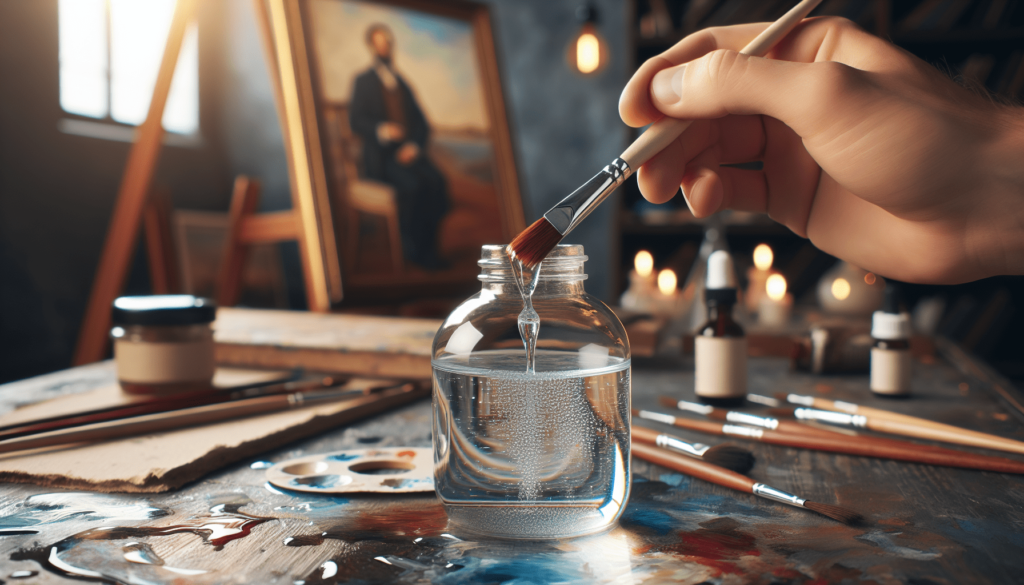
Cleaning Techniques
The techniques used in the cleaning process carry immense importance to avoid damaging the painting. Precision and patience are paramount. Below, we explore different methods suitable for various cleaning needs.
Light Surface Cleaning
Light surface cleaning involves the removal of dirt and dust from the painting’s surface. This can be done with gentle solvents like white vinegar.
- Dust Removal: Using a soft brush, lightly dust the painting’s surface.
- Solvent Application: Dip a cotton swab in your diluted white vinegar solution and gently wipe the surface in a circular motion.
- Drying: Allow the painting to air dry completely.
Removing Grime and Yellowing Varnish
For grime and yellow varnish, stronger solvents like turpentine or mineral spirits are recommended. Exercise caution and test in an inconspicuous area first.
- Test Area: Apply a small amount of solvent to a hidden area of the painting, observing any adverse reactions.
- Solvent Application: Apply the solvent to a soft cloth or cotton swab.
- Cleaning: Gently clean the painting in sections, working methodically to avoid streaks.
- Inspection: Regularly inspect your progress with a magnifying glass.
Deep Cleaning for Stubborn Residues
For deeply ingrained residues, a potent solvent like acetone may be necessary. Use sparingly and with extreme caution.
- Test Area: Apply acetone to a hidden area.
- Solvent Application: Using a cotton swab, apply acetone to the target area in small amounts.
- Cleaning Technique: Dab lightly rather than scrubbing, reducing the risk of damage.
- Drying: Allow the painting to dry fully in a well-ventilated space.
Post-Cleaning Care
Cleaning your oil painting is only part of the maintenance process. Proper post-cleaning care ensures the longevity of your artwork.
Varnishing
Applying a fresh varnish layer protects the painting from dust, moisture, and further degradation.
- Choosing Varnish: Select a high-quality artist varnish suitable for oil paintings.
- Application Method: Apply evenly with a soft brush or spray, following the manufacturer’s guidelines.
- Drying Time: Allow adequate drying time, usually specified on the varnish product.
Storage and Display
How you store and display your oil paintings also impacts their longevity.
- Environmental Conditions: Avoid direct sunlight, extreme temperatures, and high humidity.
- Framing: Use protective frames that include UV-resistant glass.
- Routine Inspection: Periodically inspect the painting for dust and signs of deterioration.
Handling Touch-Ups
If you notice areas that require retouching post-cleaning, it’s crucial to approach this step cautiously.
- Consult a Professional: For significant touch-ups, consider consulting a professional conservator.
- Use Appropriate Materials: If undertaking minor touch-ups yourself, use high-quality oil paints and appropriate mediums.
Professional Restoration
In some cases, professional restoration might be the best option, particularly for valuable or significantly damaged paintings. Professional conservators have the tools, materials, and expertise necessary to restore paintings to their original state.
When to Consult a Professional
- Severe Damage: If the painting has significant tears, cracks, or flaking paint.
- Valuable Artwork: High-value paintings deserve professional care to prevent devaluation.
- Complex Issues: Intricate problems beyond simple cleaning, such as mold or water damage.
Choosing a Professional Conservator
Investigate and choose a reputable conservator with specialized experience in oil paintings.
- References and Reviews: Check references and reviews to ensure the credibility of the conservator.
- Qualifications and Affiliations: Look for memberships in professional organizations like the American Institute for Conservation (AIC).
Common Mistakes and How to Avoid Them
Here are a few common mistakes to avoid during the cleaning process:
- Using Excessive Solvent: Overuse of solvent can damage the painting. Always use minimal amounts.
- Skipping the Test Area: Not testing the solvent can lead to unexpected damage.
- Applying Too Much Pressure: Gentle application is key. Excessive pressure can harm the surface.
Tips for Success
- Patience is Crucial: Rushing the process increases the risk of errors.
- Regular Maintenance: Frequent but gentle cleanings extend the painting’s life.
- Consult When Uncertain: When in doubt, consult a professional conservator.
Conclusion
Cleaning oil paintings is an intricate and delicate process that requires careful consideration and respect for the artwork. The choice of solvent—be it turpentine, mineral spirits, white vinegar, or acetone—must be tailored to the specific needs and conditions of the painting. Preparation and appropriate techniques ensure successful cleaning, while post-cleaning care and periodic inspections preserve the painting’s longevity and brilliance.
By understanding these elements and applying proper practices, you can maintain the beauty and integrity of your oil paintings for years to come. Always remember, when in doubt or facing significant restoration challenges, consulting a professional conservator is the wisest course of action.
